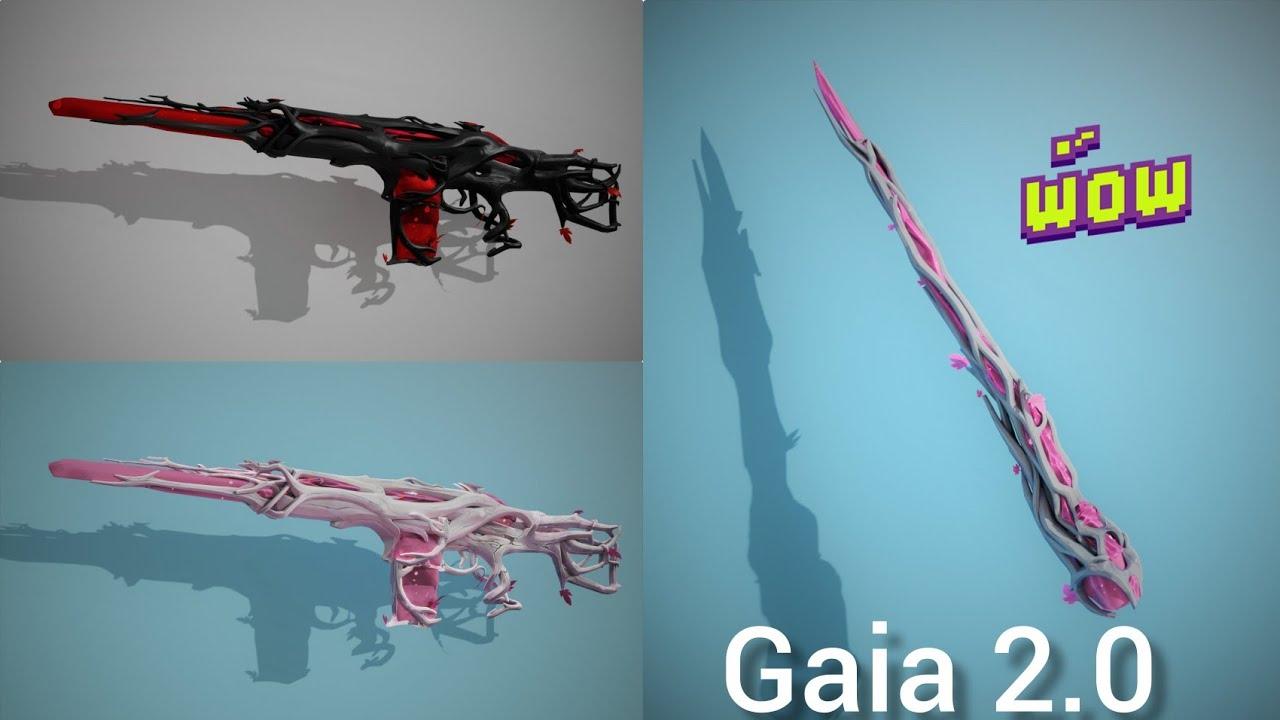Table of Contents
- Understanding Gaia 2.0: The Vision Behind the Next Evolution of Consciousness
- Key Features of Gaia 2.0: Innovations Transforming Our Relationship with the Planet
- Practical Applications of Gaia 2.0: How to Integrate Sustainability into Daily Life
- Community Engagement in Gaia 2.0: Building Collaborative Networks for Global Change
- Future Implications of Gaia 2.0: Navigating Challenges and Embracing Opportunities
- Q&A
- To Conclude
Understanding Gaia 2.0: The Vision Behind the Next Evolution of Consciousness
Gaia 2.0 represents an exciting paradigm shift in our collective consciousness, intertwining technology and spirituality to forge a new reality. Central to this vision is the concept of interconnectedness, where every individual contributes to the overall harmony of the planet. By embracing this understanding, we are not merely observers of life but active participants in a greater evolutionary journey. The emphasis here is on collaboration over competition, fostering community and unity among diverse groups and cultures.
This evolution is supported by advancements in technology, particularly in fields such as artificial intelligence and blockchain, which help facilitate transparency and accountability. These tools can empower individuals by creating decentralized systems that promote self-sufficiency, passion, and creativity. In essence, Gaia 2.0 invites us to explore the ways in which we can leverage technology to nurture our natural environment and society as a whole. Some key aspects to consider include:
- Eco-Conscious Innovations: Synergizing technology with sustainability to promote greener practices.
- Global Connectivity: Enhancing communication across borders to foster empathy and understanding.
- Collective Intelligence: Harnessing the power of community-driven knowledge to solve complex problems.
Moreover, Gaia 2.0 envisions a framework that integrates personal growth with global responsibility. This holistic approach encourages individuals to examine their roles in the larger ecosystem, balancing personal needs with the strive for collective well-being. Engaging in mindfulness practices and exploring spiritual paths can enhance this awakening, enabling individuals to attune to their deeper selves while remaining rooted in the global community.
| Aspect | Benefits |
|---|---|
| Technological Integration | Drives sustainable practices and responsible consumption. |
| Global Cooperation | Fosters unity and empathy across cultures. |
| Mindfulness and Growth | Enhances personal well-being and social responsibility. |

Key Features of Gaia 2.0: Innovations Transforming Our Relationship with the Planet
Gaia 2.0 represents a paradigm shift in sustainability and ecological awareness, merging cutting-edge technology with deep-rooted environmental insights. One of the standout features is its real-time data integration capabilities. By harnessing the power of IoT sensors, Gaia 2.0 allows users to monitor climate changes, air quality, and natural resources in real-time. This not only influences individual behaviors but also helps organizations make informed decisions that impact the broader ecosystem.
Moreover, Gaia 2.0 employs AI-driven analytics to understand complex environmental patterns. By analyzing historical and current data, the platform offers predictive insights into ecological trends. This innovation empowers communities to preemptively address potential environmental issues, transform local economies, and foster a stronger connection to their natural surroundings. The approach motivates collective action, driving home the importance of collaborative sustainability efforts.
Another remarkable feature is its community engagement tools that encourage user interaction and education. Users can share their experiences, participate in local initiatives, and access a wealth of resources on sustainable living. The platform includes a built-in forum for discussions and educational modules designed to inspire environmental stewardship across diverse demographics. Through these tools, Gaia 2.0 not only transforms our relationship with nature but also cultivates a global consciousness aimed at preserving our planet for future generations.

Practical Applications of Gaia 2.0: How to Integrate Sustainability into Daily Life
Integrating sustainability into daily life can be both rewarding and accessible through innovative practices inspired by Gaia 2.0. Start by evaluating your consumption habits. Consider switching to items with minimal packaging or supporting local artisans and farmers. This not only reduces your carbon footprint but also fosters community connections. Here are some practical steps you could take:
- Opt for reusable bags and containers.
- Purchase seasonal produce to minimize transport emissions.
- Choose energy-efficient appliances and light bulbs.
Another significant aspect is enhancing your home’s sustainability. Simple modifications can have a substantial impact. For instance, incorporating indoor plants can improve air quality while adding a touch of nature to your space. Furthermore, consider the following enhancements:
- Install a rainwater harvesting system to irrigate your garden.
- Use solar panels to power your home, reducing reliance on fossil fuels.
- Monitor and manage water usage through efficient fixtures and smart technology.
Social engagement is vital in driving the message of sustainability. Join forces with your community to amplify your efforts. Participate in or initiate local clean-up drives, community gardens, or sustainability workshops. This not only raises awareness but also builds a supportive network dedicated to ecological conservation. Consider these community actions:
- Organize neighborhood recycling competitions.
- Form carpooling networks to reduce vehicle emissions.
- Start educational programs about sustainable practices in schools or local centers.

Community Engagement in Gaia 2.0: Building Collaborative Networks for Global Change
In the vibrant ecosystem of Gaia 2.0, community engagement plays a pivotal role in driving collective action towards meaningful global change. By harnessing the power of collaborative networks, individuals and organizations can share resources, knowledge, and skills, fostering a culture of innovation and resilience. The emphasis on partnership not only amplifies the reach of various initiatives but also enhances the ability to tackle pressing environmental and social challenges.
Effective community engagement relies on several key elements:
- Inclusivity: Ensuring that diverse voices are represented, creating a rich tapestry of perspectives that inform decision-making.
- Transparency: Building trust through open communication, where all stakeholders are informed and engaged in the process.
- Empowerment: Encouraging individuals to take initiative and leadership roles within their communities, fostering personal and collective growth.
Utilizing digital platforms, Gaia 2.0 connects changemakers across the globe, facilitating collaboration in real-time. The following table illustrates the impact of different community engagement strategies:
| Strategy | Description | Impact |
|---|---|---|
| Online Forums | Platforms for discussion and idea sharing. | Enhanced collaboration and feedback. |
| Workshops & Webinars | Educational events to build skills. | Increased knowledge and expertise. |
| Local Initiatives | Community-driven projects addressing local issues. | Stronger community bonds and localized solutions. |

Future Implications of Gaia 2.0: Navigating Challenges and Embracing Opportunities
The advent of Gaia 2.0 presents a landscape ripe with both challenges and opportunities. As we increasingly rely on digital ecosystems to facilitate connectivity and sustain our natural resources, the implications for environmental stewardship and technology integration become clear. One significant challenge is ensuring that advancements in technology do not exacerbate existing environmental issues. Our transition must prioritize sustainability, especially in areas such as energy consumption and waste management. The following points highlight key areas of focus in our attempt to harmonize technology with environmental needs:
- Data Management: Efficiently utilizing data analytics to optimize resource use and minimize waste.
- Regulatory Compliance: Adapting to new regulations designed to mitigate environmental impact.
- Community Engagement: Involving local communities in decision-making processes surrounding technological deployment.
Conversely, Gaia 2.0 presents an array of opportunities that can propel us towards a more sustainable future. The intersection of technology and environmentalism can lead to innovative solutions designed to tackle global challenges. The capacity for real-time monitoring and responsive action through IoT devices empowers stakeholders to manage resources more effectively. Consider the following potential advantages:
| Opportunity | Benefit |
|---|---|
| Smart Agriculture | Enhanced crop yields and reduced water usage. |
| Renewable Energy Solutions | Decreased reliance on fossil fuels and lower carbon footprints. |
| Urban Planning Innovations | More efficient public transportation and green spaces. |
as we navigate the complexities of Gaia 2.0, it is crucial to remain vigilant about its implications. By strategically addressing the challenges while harnessing the numerous opportunities available, we can cultivate a future that is both technologically advanced and environmentally conscious. This balance will ultimately define our success in creating resilient communities that thrive alongside the natural world.



0 Comments